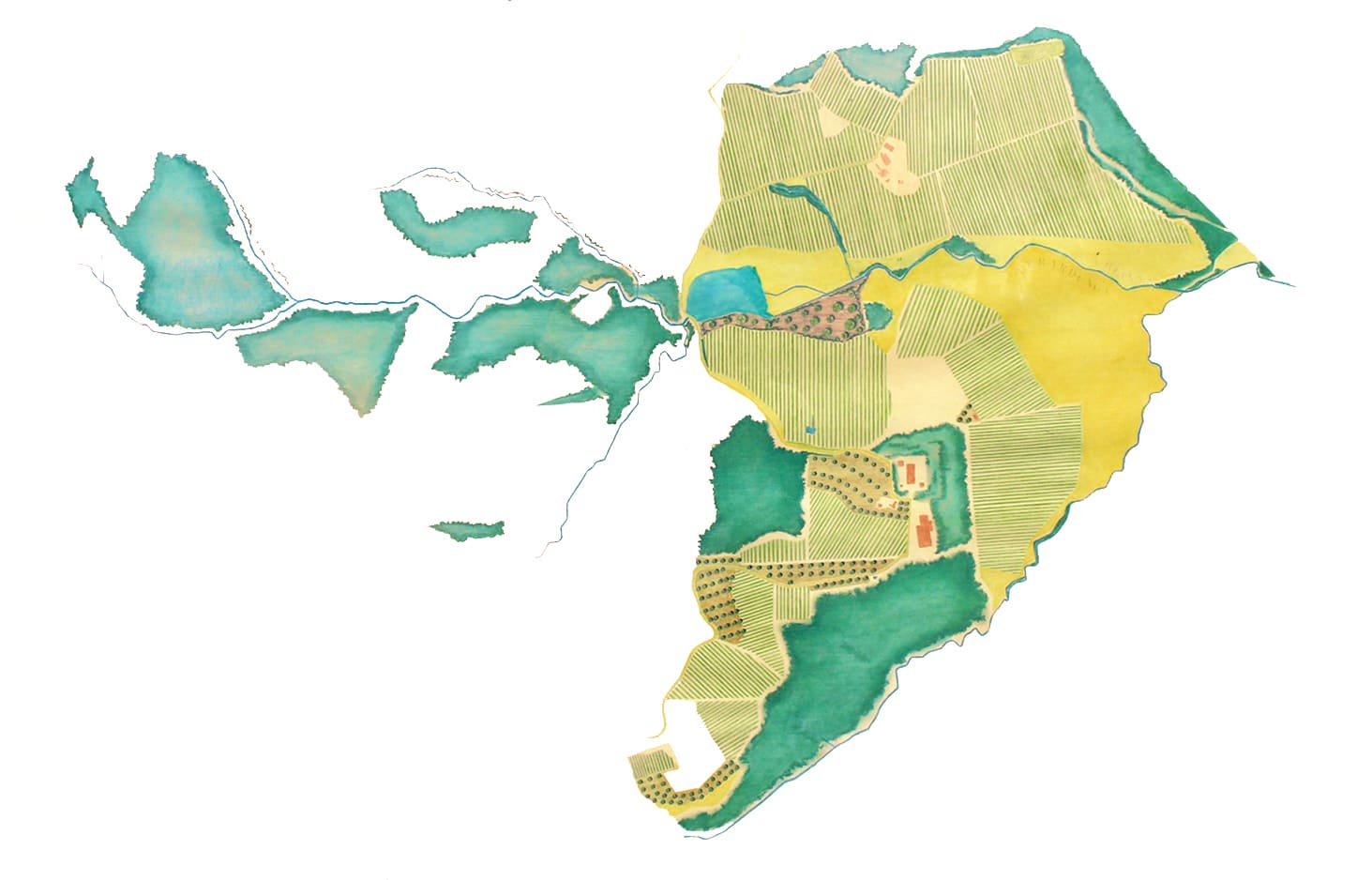Winemaking:
from vineyards to wine

Our vineyards cover approximately 32 ha of the hilly area between two municipalities: Castelnuovo Berardenga, and Radda in Chianti, to the North-East of Siena. The vineyards lie at 250 – 480 m. a.s.l. Vine density varies from 4,000 to 5,000 vines per ha, yielding about 5 tons of grapes per ha.
1
2
3
4
5
6
8
7
9
10
11
12
13
14
15
16
The vineyards
1-2
Colombaino
Grape variety: Sangiovese
Area: 1 ha
Exposition: S-S-E
Altitude: 460 m
Grape variety: Sangiovese
Area: 1 ha
Exposition: S-S-E
Altitude: 460 m
3-4
Cancello Rosso
Grape variety: Sangiovese
Area: 2 ha
Exposition: S-S-E
Altitude: 440 m
Grape variety: Sangiovese
Area: 2 ha
Exposition: S-S-E
Altitude: 440 m
5
Poggio del Tracco
Grape variety: Sangiovese
Area: 1,5 ha
Exposition: North-East
Altitude: 480 m
Grape variety: Sangiovese
Area: 1,5 ha
Exposition: North-East
Altitude: 480 m
6
La Ragnaia
Grape variety: Merlot
Area: 4,1 ha
Exposition: S-S-E
Altitude: 440 m
Grape variety: Merlot
Area: 4,1 ha
Exposition: S-S-E
Altitude: 440 m
7
Sotto la Ragnaia
Grape variety: Sangiovese
Area: 1,4 ha
Exposition: East
Altitude: 340 m
Grape variety: Sangiovese
Area: 1,4 ha
Exposition: East
Altitude: 340 m
8
Sotto Aiolina
Grape variety: Sangiovese
Area: 3,2 ha
Exposition: East
Altitude: 380 m
Grape variety: Sangiovese
Area: 3,2 ha
Exposition: East
Altitude: 380 m
9
La vigna dell'orto
Grape variety: planned 2025
Area: 3,8 ha
Exposition: North-Eeast
Altitude: 380 m
Grape variety: planned 2025
Area: 3,8 ha
Exposition: North-Eeast
Altitude: 380 m
10
Lago
Grape variety: Sangiovese
Area: 2,4 ha
Exposition: East
Altitude: 440 m
Grape variety: Sangiovese
Area: 2,4 ha
Exposition: East
Altitude: 440 m
11-13
San Romolo basso
Grape variety: Merlot, Ancelotta
Area: 3,5 ha
Exposition: South
Altitude: 370-420 m
Grape variety: Merlot, Ancelotta
Area: 3,5 ha
Exposition: South
Altitude: 370-420 m
14
San Romolo Alto
Grape variety: Sangiovese
Area: 3,7 ha
Exposition: South
Altitude: 450 m
Grape variety: Sangiovese
Area: 3,7 ha
Exposition: South
Altitude: 450 m
15
La Capanna
Grape variety: Sangiovese
Area: 3 ha
Exposition: South
Altitude: 440 m
Grape variety: Sangiovese
Area: 3 ha
Exposition: South
Altitude: 440 m
16
Le Pecchie
Grape variety: Sangiovese
Area: 0,9 ha
Exposition: South
Altitude: 480 m
Grape variety: Sangiovese
Area: 0,9 ha
Exposition: South
Altitude: 480 m
Alberese
this soil gifts wines with structure, intensity and higher tannins
Galestro
brings out elegance and contributes to high ageing potential
Macigno
the best soil for elegant wines with beautiful aroma
Sangiovese, the most famous autochthonous grape variety in Tuscany, reigns supreme in our vineyards. We also grow other varieties, local and international, such as Merlot. Harvesting is by hand only and takes place between the end of September and the first decade of October, as the grapes achieve optimal maturity. Thanks to excellent soil composition and specific microclimate our wines are complex, rich, and enticing.
The wine cellar
Once harvested, the grapes are destemmed and pumped into stainless steel tanks. It is there that alcoholic fermentation takes place under controlled temperature, usually 28 – 30 °C. In the course of fermentation, the contents of the tanks undergo frequent pump over and delestage operations, to extract maximum amount of aromatic and coloring substances. The next step is malolactic fermentation.
Once fermentation is over, the wine starts its maturation journey in various tanks made of different materials approved for oenology: some of which are made of stainless steel, or French oak barrels of different sizes, 60 hl, 50 hl so called “botti”, 25 hl, and 5hl named “tonneaux”, where it stays from 6 to 30 months, depending on the wine type and style. Once blended and bottled, our wines benefit from a further period of fining of a few months, so that they perfect their organoleptic characteristics and bring forward its best qualities.
Contact us
Office:
+39 0577 22615
info@aiolawines.com
Wine shop, Wine tasting booking:
+39 0577 322615
booking@aiolawines.com
+39 0577 22615
info@aiolawines.com
Wine shop, Wine tasting booking:
+39 0577 322615
booking@aiolawines.com

